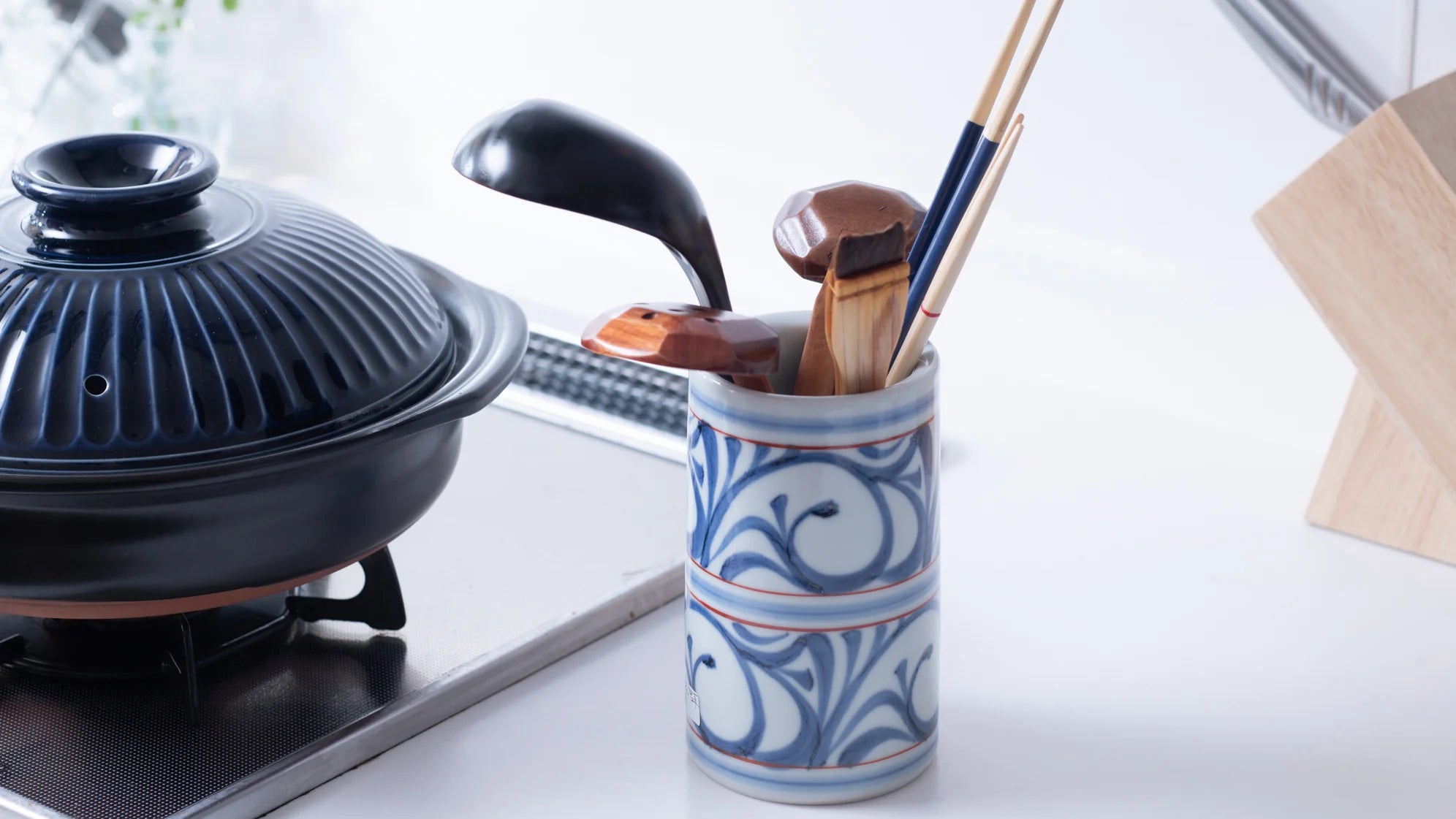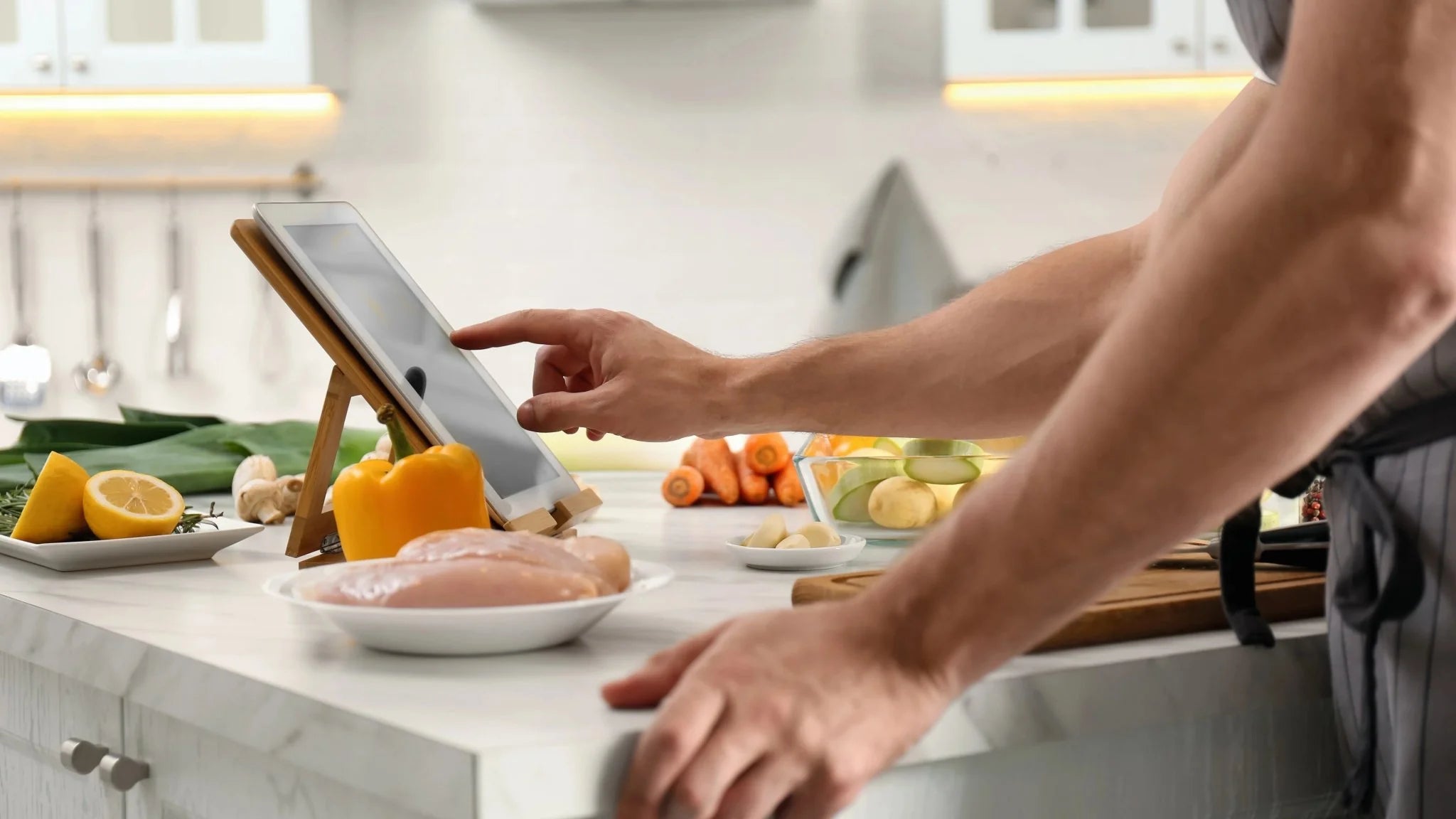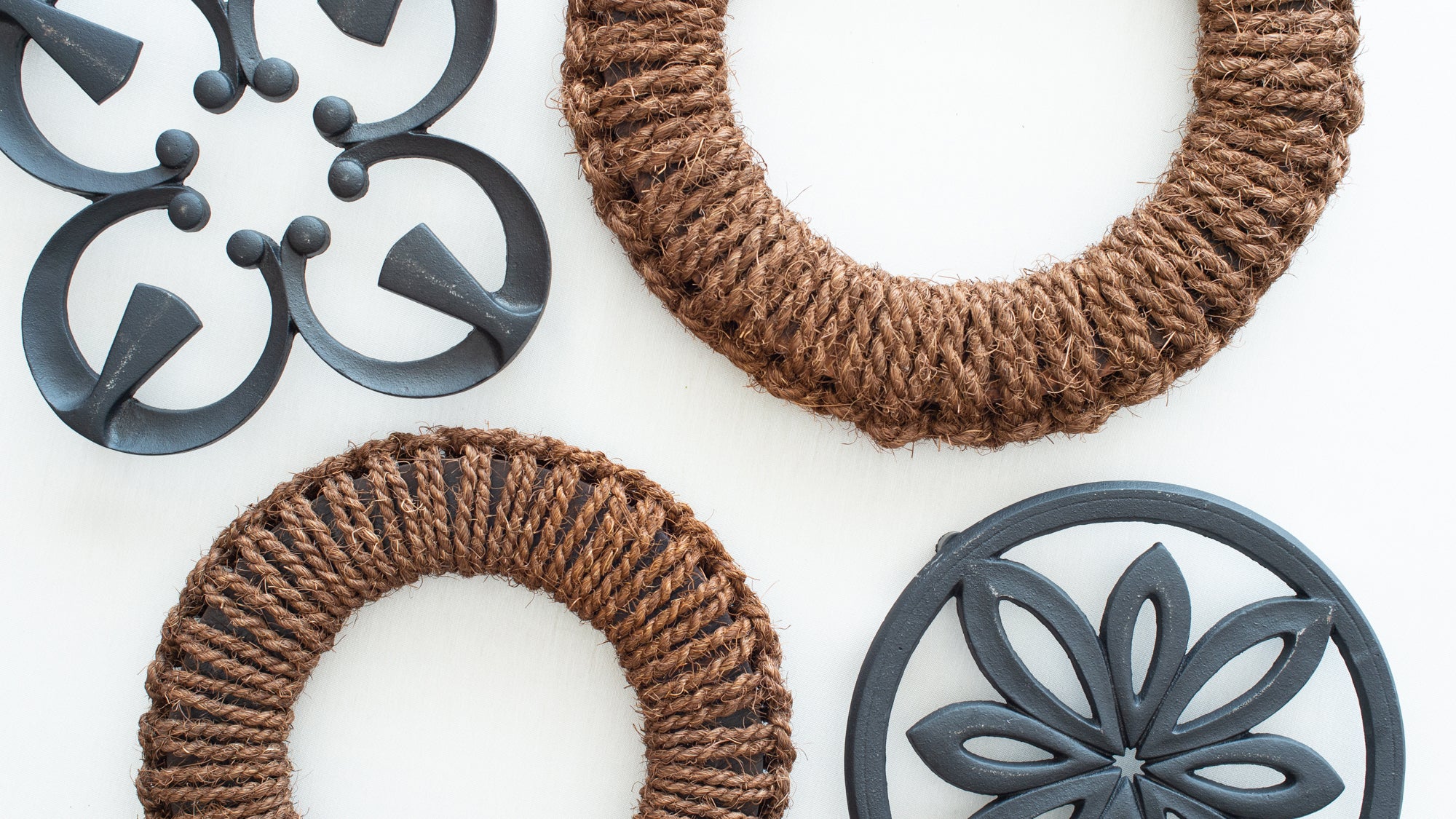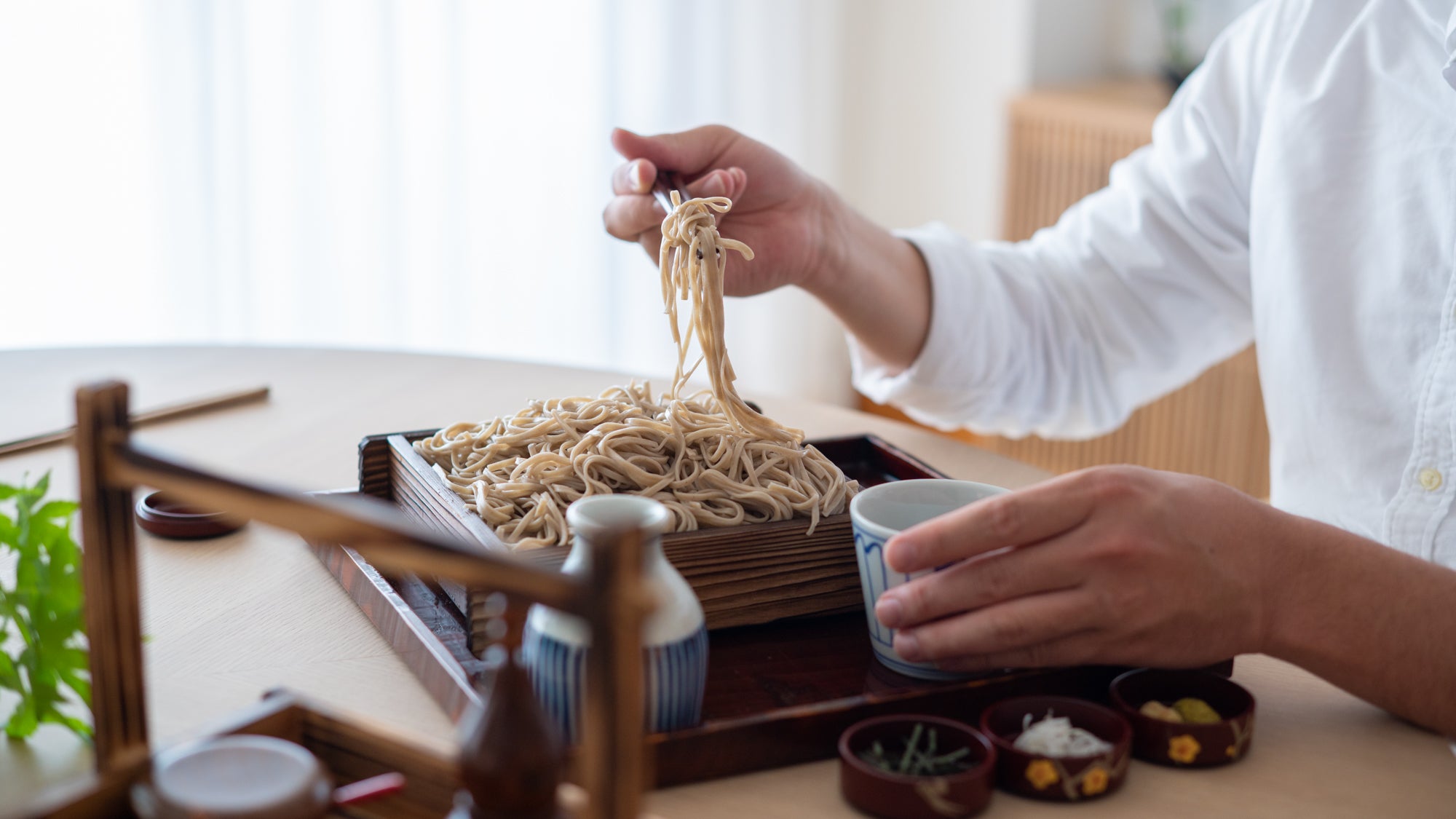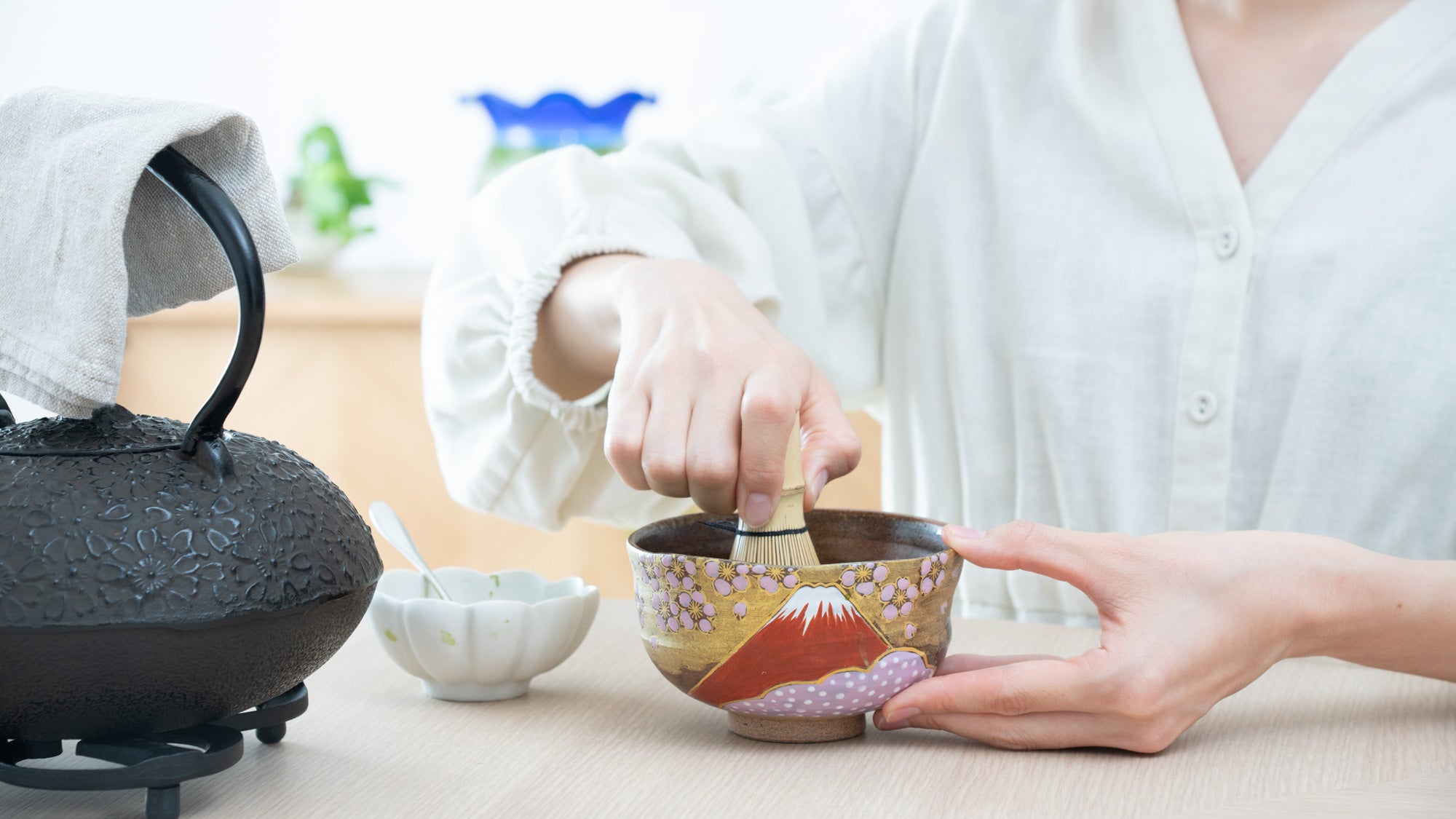24 Feburary 2023
Musubi Kiln's Office Tea
Satisfying Our Sweet Tooth with "Table-Style Sado"

For our third office get together, we decided to change things up and try a modern, casual variation of a traditional Japanese tea ceremony, otherwise known as "table-style sado." This style is perfect for anyone looking to entertain guests and enjoy a Japanese tea experience without arduous preparation!
"Sado" in Japanese translates to "The Way of Tea." It pursues wabi sabi–a philosophy that prioritizes simplicity and tranquility. Typically, every action throughout the ceremony is coordinated and intentional. It is a highly ritualistic way of serving and enjoying matcha, involving a host and their guests. We asked one of our colleagues who has trained in the art of sado to act as our host and teach us a simplified version we could try at home.
We started by selecting the bowls to drink matcha from. There are bowls with a wide or narrow base. It is recommended for beginners to choose a bowl with a wider base so that the matcha powder is easy to stir. Although there are bowls made specifically for Japanese tea ceremonies, it is also possible to use a large soup or donburi bowl (large bowls for Japanese cuisine).

Once everyone was seated, our colleague instructed us to first take a Japanese confection. In sado, it is customary to eat the confection before drinking matcha. This is so that the sugary aftertaste of the sweets can be cleansed with the pleasant bitterness of the tea.

At first, we were nervous about using chopsticks to grip the smooth sweet. The chopsticks must be lifted with your right hand over the top or middle part while supported by your left underneath. Once lifted, you can switch the chopsticks to your right hand.

The confections were placed on a "kaishi" (thin washi paper), then cut and eaten with a "kashikiri" (sweet pick). Traditional tea ceremony etiquette requires you to eat the Japanese confection in two to three bites. We all had a good laugh as this proved to be quite the challenge.

Our colleague reassured us this rule can be omitted during table-style sado. If any crumbs from the confection are left on the kashikiri, you can wipe them clean on the top corners of the kaishi.
Next up was making the matcha! The utensils you will need differ depending on the tea school you decide to follow. For table-style sado, basic items include a kettle, a "natsume" (green tea container), a "chasuku" (tea scoop), a "chasen" (tea whisk), and a "chawan" (tea bowl).

The matcha powder is usually sifted and prepared in a separate container to avoid clumps before being placed in the natusume. Starting clockwise, each of us placed two heaps of matcha powder on the chashaku from the natsume.

After the powder had been placed inside the bowl, it was time to add the hot water. We were instructed to place enough water for two and a half sips. Again, starting clockwise, we used the chasen to mix the tea. This mixing should be done as if you were writing the letter "m" in the bowl. A tip is to mix, not using arm strength, but the flexibility of your wrist!

With the help of our host, the matcha became nice and foamy. Now it was time to drink! We turned the bowl clockwise twice in order to avoid its front and show appreciation to our host.

We drank the matcha in two and a half sips, removing our lips from the bowl each time. For the last sip, we were told that it is polite to slurp the foamy matcha from the bowl, making sure that there is nothing left. The matcha was refreshing and coated our tongues with slightly bitter undertones.

For many of us at MUSUBI KILN, this was our first sado experience! We felt very lucky to have such a knowledgeable colleague assist us in learning about tea ceremonies. Official tea ceremonies at tea schools can be daunting, but table-style sado is one where you can casually try at home! We look forward to sharing what we learned with our family and friends. We hope our readers might be inspired to try it too!
View All Matcha Items







